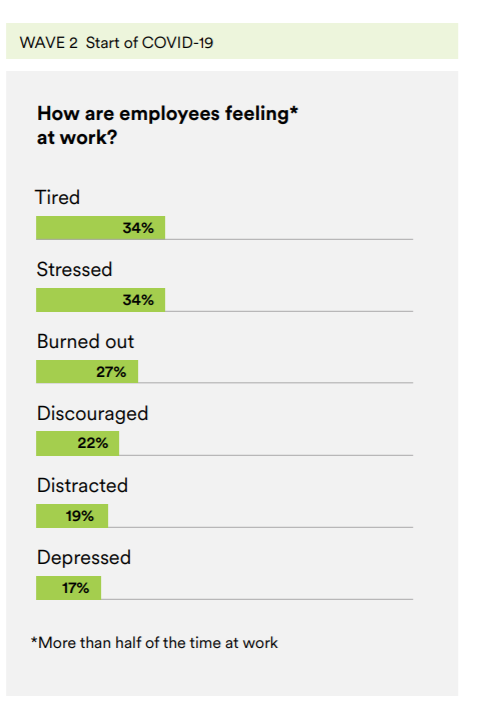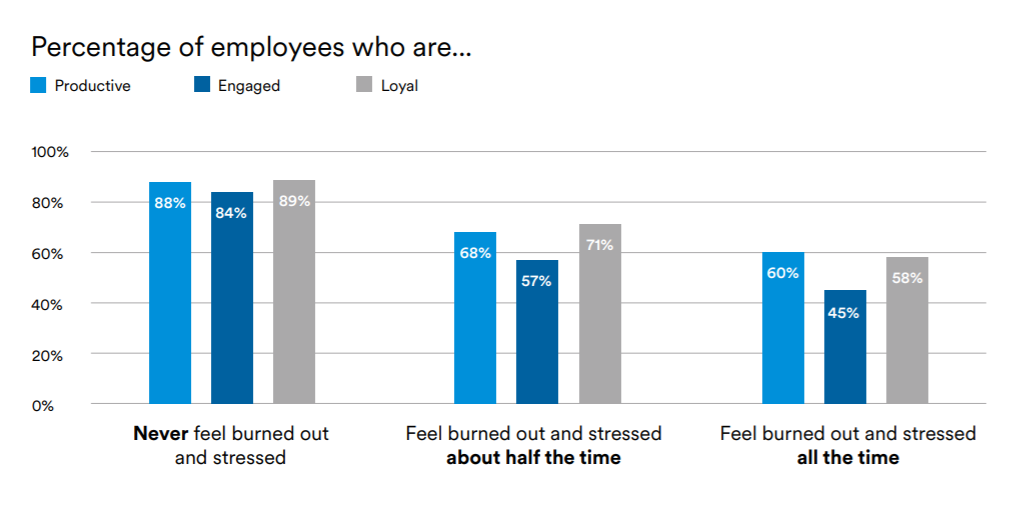Latest trends in employee engagement (Aus, NZ and global)
13 years and two months – that’s how long the average person spends at work, over their entire lifetime (according to the Huffington Post ). Unfortunately, the majority of employees don’t ...

13 years and two months – that’s how long the average person spends at work, over their entire lifetime (according to the Huffington Post ). Unfortunately, the majority of employees don’t find these years particularly satisfying because they do not feel engaged at work.
Staff dissatisfaction leads to high turnover rates, poor service delivery, disappointed stakeholders and lost revenue, so it’s crucial for organisations to identify and address disengagement in the workplace. Fortunately, more managers are taking action to improve workplace happiness because they see the irrefutable link between highly engaged teams and optimal business performance.
Global trends in employee engagement
Worldwide, 85% of full-time employees are disengaged at work.
These employees fall into two categories: those whose needs aren’t fully met (“not engaged”) and people with no job satisfaction at all (“actively disengaged”). This leaves only 15% of employees who are enthusiastic about their role and committed to the organisation that pays them.
Advisory firm Gallup made this startling discovery after surveying organisations from 155 countries for the 2017 State of the Global Workplace report.
Engagement levels are influenced by job and industry type:
- Professionals in “knowledge-based fields” are more likely to find their work stimulating because they have greater opportunity to express their opinions and develop their skills. Engaged workers outnumber actively disengaged by more than two to one.
- There’s more disengagement in “routinised” industries such as administration, construction and manufacturing – twice as many people are actively disengaged.
- Manufacturing workers struggle the most with engagement because the industry is process-driven and there is less focus on the people who work there.
Employee engagement trends in Australia and New Zealand
According to Gallup, only 14% of employees in Australia and New Zealand care enough about their job to help the organisation move forward. This puts these two nations slightly behind the global engagement average of 15%; ranking seventh out of 11 global regions.
Other interesting insights for New Zealand and Australia
- 1 in 12 respondents in ELMO’s HR Industry Benchmark Survey 2019 report said employee engagement is taking up too much of HR’s time.
- Only one in five leaders in the region are engaged in their jobs. (Gallup)
- Diversity and inclusion in the workplace is a key driver of staff engagement in Australia (73%). (Workplace Info)
- Australian businesses are showing more interest in nurturing employee satisfaction to retain their top talent (Inside HR). Levels have risen for the first time in three years. (Workplace Info)
- 66% of Australian HR executives acknowledge their company workforce needs transforming. (KPMG)
- In 2017, 82% of employees in New Zealand said their employer cares about their well-being. This rose significantly from 72% in 2010. (HRD)
How does your organisation fare against global employee engagement trends?
We know that employee disengagement costs businesses millions of dollars in revenue every year. Is this a problem that your organisation needs to address?
This article shows you how to measure staff participation, to see how you compare to the global average. It gives you a better idea of whether or not you need to implement engagement strategies.
While these numbers are important for painting a picture of employee engagement – and disengagement in Australia and New Zealand – they refer to a time before COVID-19.
How COVID-19 has impacted employee engagement levels
COVID-19 has turned the world, as we knew it, upside down. Economies are bearing the brunt, and businesses around the world are struggling. It has drastically changed the way businesses operate and employees work. Naturally, this drastic change has had negative effects on employee wellbeing.
MetLife’s Employee Benefits Trends Study 2020 found that COVID-19 encouraged negative feelings in employees. When asked how they were feeling at work, over one-third (34%) of respondents said they were “tired”, and the same amount said they were “stressed”. See the results in the graph below.
The study also looked at the levels of employee engagement, loyalty and productivity before the pandemic. The results show that the employees who feel stressed and burned out all the time are less engaged, loyal and productive. See the graph below:
With COVID-19 being such a stressful global event, employers must work harder to address employee stress and burn out, both during and after the pandemic. Not doing so will be detrimental to business outcomes.
Important statistics about employee engagement
- Businesses with a strong learning culture enjoy employee engagement and retention rates around 30-50% higher than those that don’t (Robert Half)
- Employees are 55% more likely to leave their jobs in the coming year, 32% more likely to feel dissatisfied in their jobs and 18% less likely to feel cared about by their employer (Colonial Life)
- Employees who use their strengths, skills, and abilities every day are six times more likely to be engaged at work, 8% more productive, and 15% less likely to leave their jobs. (Gallup)
- Companies with engaged employees see 233% greater customer loyalty and a 26% greater annual increase in revenue. (Aberdeen)
- Highly engaged workplaces saw 41% lower absenteeism (Gallup)
- Google found that employees who feel safe and comfortable in their team are likely to be more innovative and bring in higher revenue. (Google)
- Organisations that provide the best workplace environments (in terms of culture, technology and physical spaces) outperformed their peers with four times higher than average profits and 40% lower turnover. (SHRM)
The importance of employee engagement strategies
Employee engagement is key to retention, loyalty and productivity – all of which impact an organisation’s bottom line. There are two simple ways to boost employee engagement: conduct regular surveys to gauge employee sentiment and empower employees; and implement a rewards & recognition program to incentivise high performance. ELMO Survey and ELMO Rewards & Recognition can facilitate both approaches.
ELMO Software is a cloud-based solution that helps thousands of organisations across Australia, New Zealand and the United Kingdom to effectively manage their people, process and pay. ELMO solutions span the entire employee lifecycle from ‘hire to retire’. They can be used together or stand-alone, and are configurable according to an organisation’s unique processes and workflows. Automate and streamline your operations to reduce costs, increase efficiency and bolster productivity. For further information, contact us.
 HR Core
HR Core 













